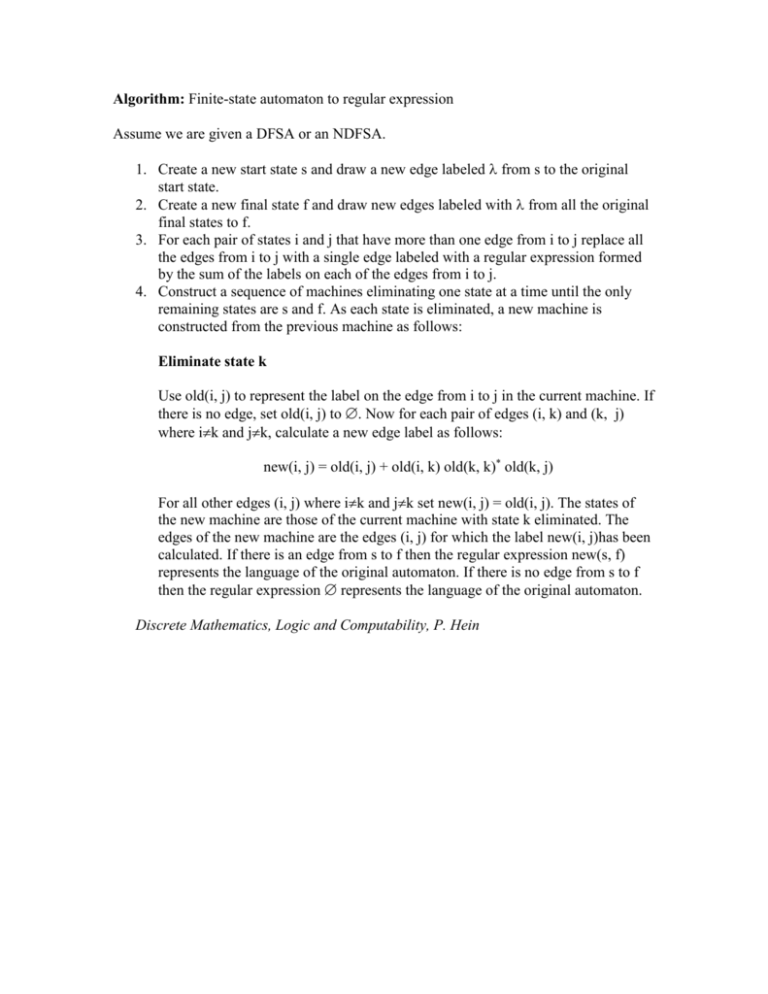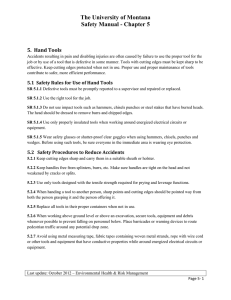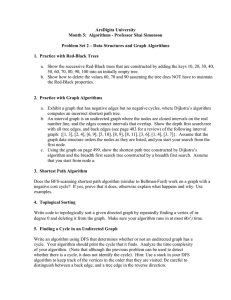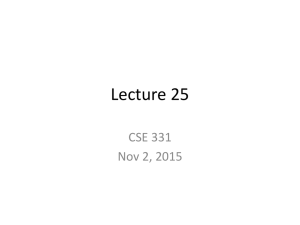Algorithm: Finite-state automaton to regular expression
advertisement

Algorithm: Finite-state automaton to regular expression Assume we are given a DFSA or an NDFSA. 1. Create a new start state s and draw a new edge labeled from s to the original start state. 2. Create a new final state f and draw new edges labeled with from all the original final states to f. 3. For each pair of states i and j that have more than one edge from i to j replace all the edges from i to j with a single edge labeled with a regular expression formed by the sum of the labels on each of the edges from i to j. 4. Construct a sequence of machines eliminating one state at a time until the only remaining states are s and f. As each state is eliminated, a new machine is constructed from the previous machine as follows: Eliminate state k Use old(i, j) to represent the label on the edge from i to j in the current machine. If there is no edge, set old(i, j) to . Now for each pair of edges (i, k) and (k, j) where ik and jk, calculate a new edge label as follows: new(i, j) = old(i, j) + old(i, k) old(k, k)* old(k, j) For all other edges (i, j) where ik and jk set new(i, j) = old(i, j). The states of the new machine are those of the current machine with state k eliminated. The edges of the new machine are the edges (i, j) for which the label new(i, j)has been calculated. If there is an edge from s to f then the regular expression new(s, f) represents the language of the original automaton. If there is no edge from s to f then the regular expression represents the language of the original automaton. Discrete Mathematics, Logic and Computability, P. Hein











